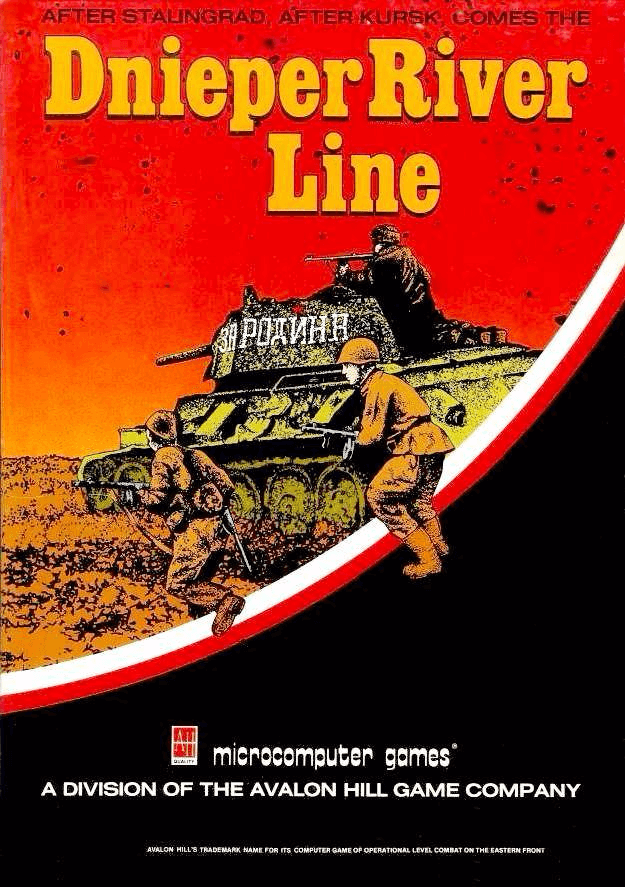
Lieutenant Narwhal. The Soviets are trying to cross the Dnieper. We need you to stop them with two medium artillery batteries, one heavy panzer brigade, two regiments of infantry on foot, one regiment of panzergrenadiers and some security forces.
Not interested! Tell the General to make an effort, or we don’t have a deal !
Then we can propose two heavy artillery batteries, two panzergrenadiers regiments, one assault gun brigade, one heavy panzer brigade and some recon vehicles.
Better. Tell the General that I accept!
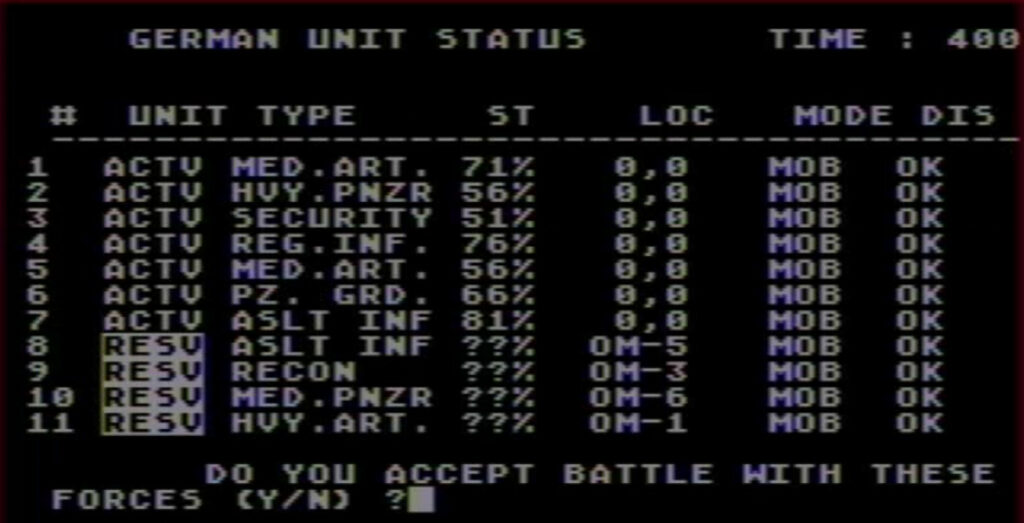
Developed by Bruce Ketchledge and released in January 1982, Avalon Hill’s Dnieper River Line covers a decisive, but not very well-known part of WW2 : the Battle of the Dnieper (September -December 1943). After their disaster at the Battle of Kursk (June-August 43), the Germans fell back in haste on the Dnieper River in Ukraine, with the Soviets hot on their heels. The Dnieper is difficult to cross and easy to defend (it is large, and its Western Bank has a steep slope), so the Soviets had two options : prepare a crossing properly, possibly waiting for the result of their operation in Central Russia against Smolensk, or cross as soon as possible with whatever they had at hand before the Germans could fortify or even establish a continuous line. The Soviet High Command choose the latter.
The first Soviet crossings were done by platoon-sized forces in small barges at best – rafts sometimes – the bridging equipment was lagging behind. Those crossing initially succeeded by lack of significant opposition as the front was 300 km long and the Germans forces unequally distributed along it, but as soon as the Germans could muster a significant force locally they counter-attacked. To support their bridgeheads, the Soviet High Command leveraged every asset it had, including activating massive partisan activity in the German rears and famously launching a catastrophically ineffective airborne assault – the last Soviet airborne assault on the Eastern front.
Dnieper River Line shows only a small but representative sample of the battle, centred around Bobruysk in modern-day Belarus – though the battle is randomized so the game does not represent any historical “battle for Bobruysk”.
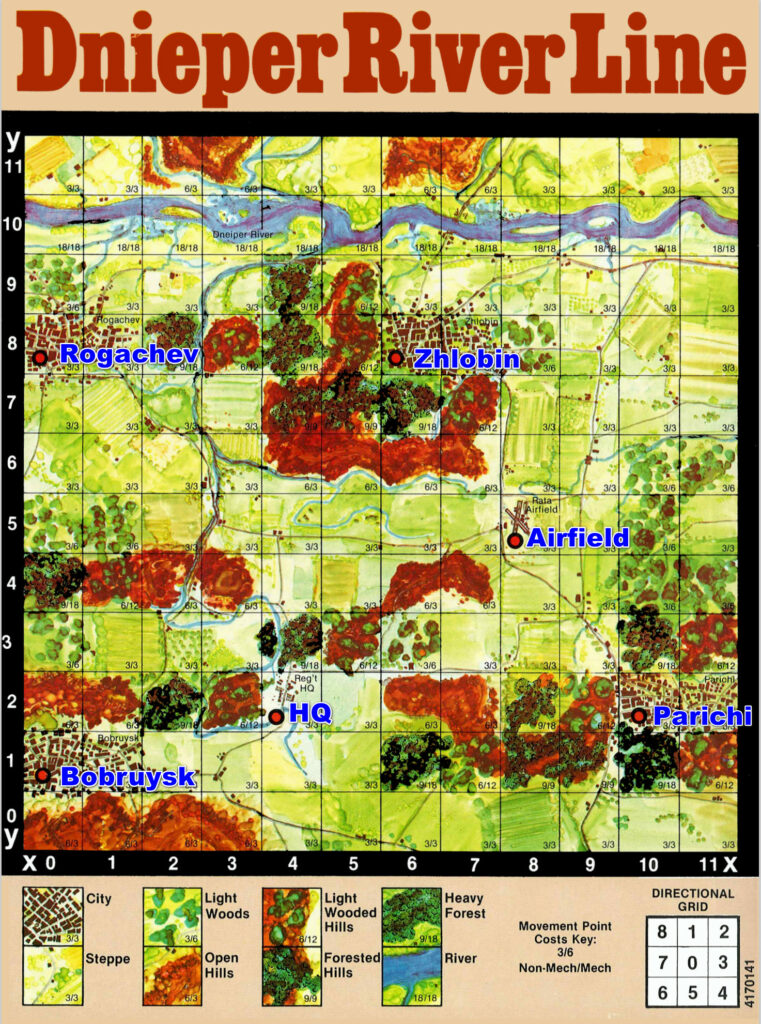
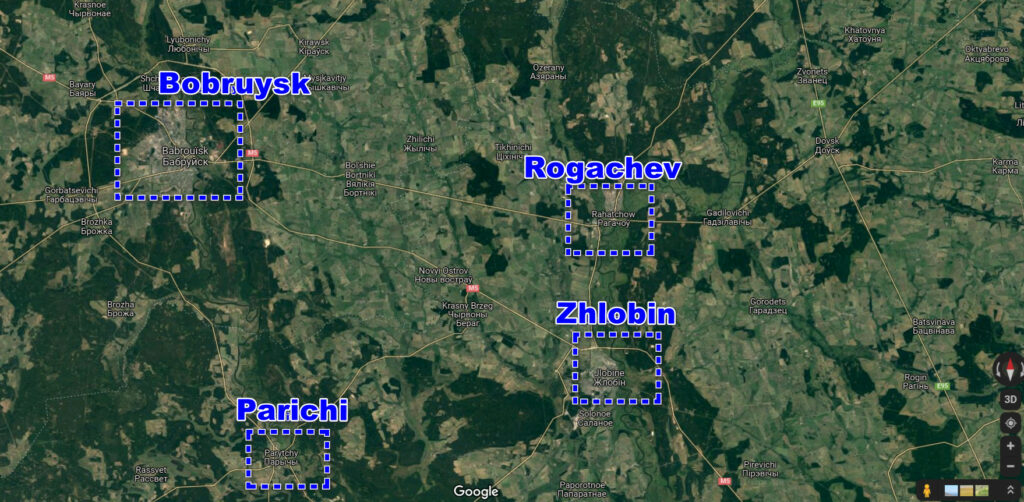
In Dnieper River Line, like in Tanktics, Avalon Hill aimed for a serious simulation of historical events with the support of a board and counters, all of them of high quality. I wanted to have the full Dnieper River Line experience, and managed to find an intact copy in Venezuela, of all places.
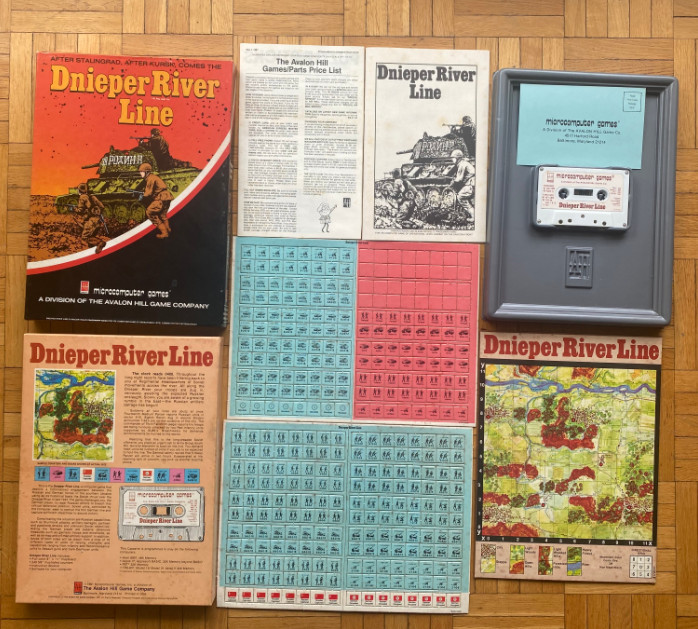
A. Initial deployment
The objective of the game is to hold a random duration between 8 to 12 hours with a randomly picked German force against a randomly picked Soviet force that tries to occupy some of six possible objectives of random value. Yes, there is a lot of randomness in this game. This AAR is at difficulty 3 (out of 4) on an Atari emulator.
At the beginning of the game, I am given a first option for a force, which I reject. I like what the game proposes in second, and since I will not be able to reject the third offer, I accept.
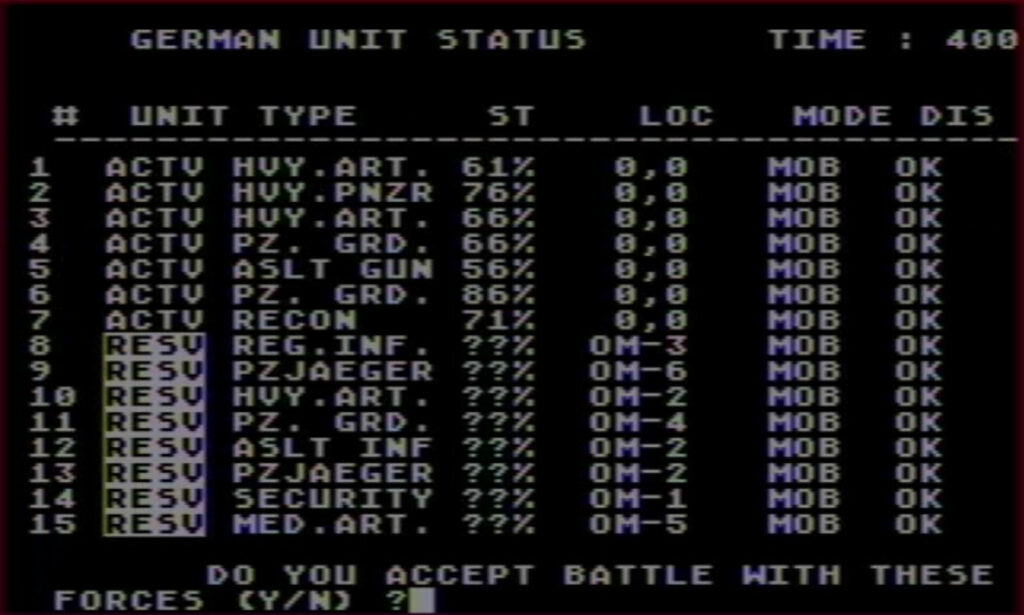
I am pretty happy with this force because it has
- Two units of panzergrenadiers – the best unit in the game : fast, great in both attack and defense,
- Heavy Artillery – superior to Medium Artillery in everything, and not even slower ; two is a bit overkill but why not,
- Recon – the fastest unit in the game, and very good in defense,
- Powerful anti-tank units : the Heavy Tanks and the Assault Guns,
In addition to this, it has some reserves [RESV] that can arrive quickly : one turn for the security unit, two for panzerjaeger (the best anti-tank unit), assault infantry and more heavy artillery.
After this, I am asked to deploy my forces.
I don’t know how many points each of the 6 objectives are worth, I only know there are 3 major objectives at respectively 11, 9 and 8 points, and 3 minor objectives at respectively 4, 1 and 0 points – each value is used once). Of course, the Soviets knows which objective is worth how many points.
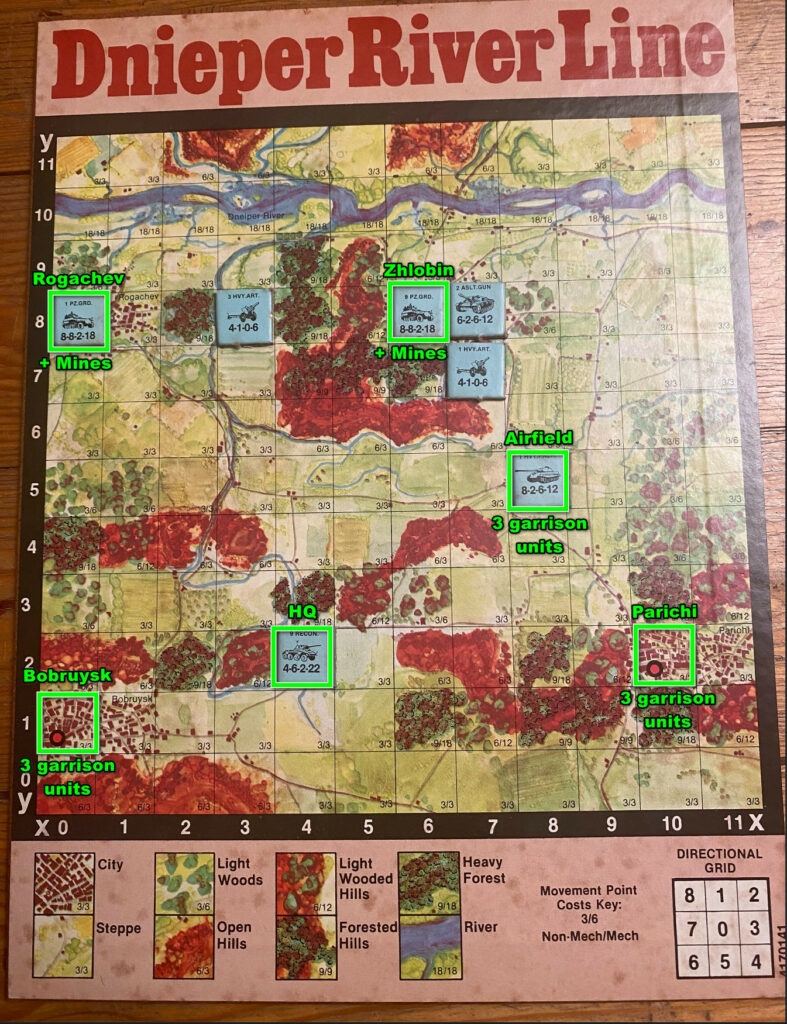
- I allocate my best defensive units (the panzergrenadiers) to Rogachev and Zhlobin, the objectives closest from the Dnieper, from which the Soviets will come
- I deploy one artillery between those two objectives to support them defensively,
- As Zhlobin is so central, I deploy my second artillery next to it, but also an assault gun that can shoot at enemy units as they advance. I don’t want to put my assault gun directly in Zhlobin as they are terrible in defense and when attacked in “melee” they are not able to shoot at passer-bys anymore,
- That leaves me with the Heavy Tanks and the Recon, that I deploy in the Airport and the HQ. The recon unit is so fast that I will be able to move it to Bobruysk or Parichi in one turn, if it looks like the Soviets are going for these targets.
Finally, I am offered to deploy mines and 9 units of garrison. I deploy the mines in Rogachev and Zhlobin to bolster their defence, and the garrisons in the hitherto undefended cities : Bobruysk and Parichi. Some more garrison is added to the airfield : the heavy tanks are not great in defense.
B. The fall of Bobruysk (turn 1-2)
After I deployed my units, it is time for the Soviets to play their first turn… and it is time for me to pay very close attention, because Soviet turns from my point of view are a list of things my troops see and do, without any pause. I scramble to move counters on my board as the text scrolls.

The executive summary of this is that I am already drowning in Soviets, and that enemy paratroopers landed in my backyard, which I was not sure of because due to some bug they were displayed as having landed off-map.
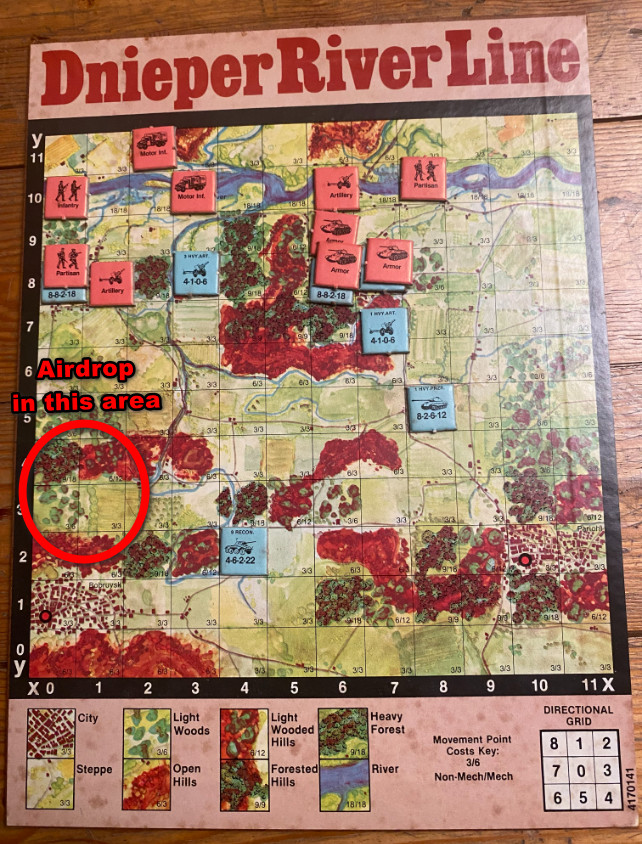
Rogachev and Zhlobin are immediately attacked, but the combination of artillery support, mines and panzergrenadiers push the attackers back easily. Here is for instance the result of the battle of Zhlobin :
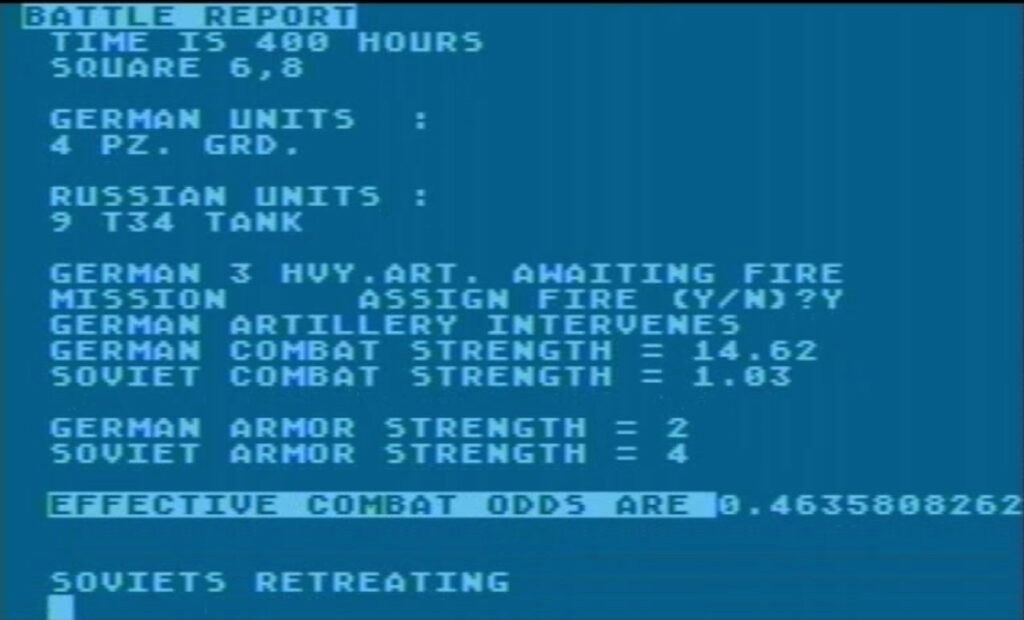
My assault gun unit is engaged by enemy reconnaissance, and the game tells me that the Soviets are forced to retreat there as well, but due to some bugs they actually remain where they are : right on top of my assault guns.
It is my turn. A check on the “Objective” status worries me a bit :
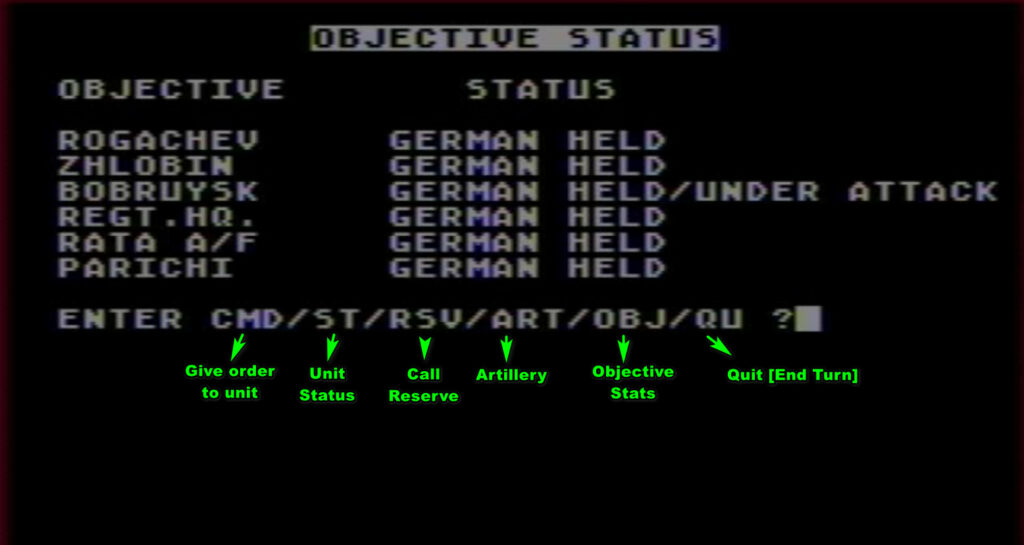
It looks like the Soviet paratroopers reached Bobruysk already. I ask for some off-map artillery support aimed right at the city. If you are worried for my garrison, don’t be: in this game, the garrison is composed of Ukrainian hiwis ethereal beings immune to artillery.

Only one paratrooper unit ? Nothing my recon cannot handle.
I am allowed to request one reinforcement from the reserve this turn, so I request the assault infantry (it will arrive in two turns), and I move my recon unit toward Bobruysk…
… and it barely moves.

That’s all I want to do this turn, I prefer to keep the other units immobile (they are stronger this way).
The second Soviet turn is more of the same, a lot of Soviets everywhere, that are stopped at range by my units. This is the situation at the end of the Soviet turn :
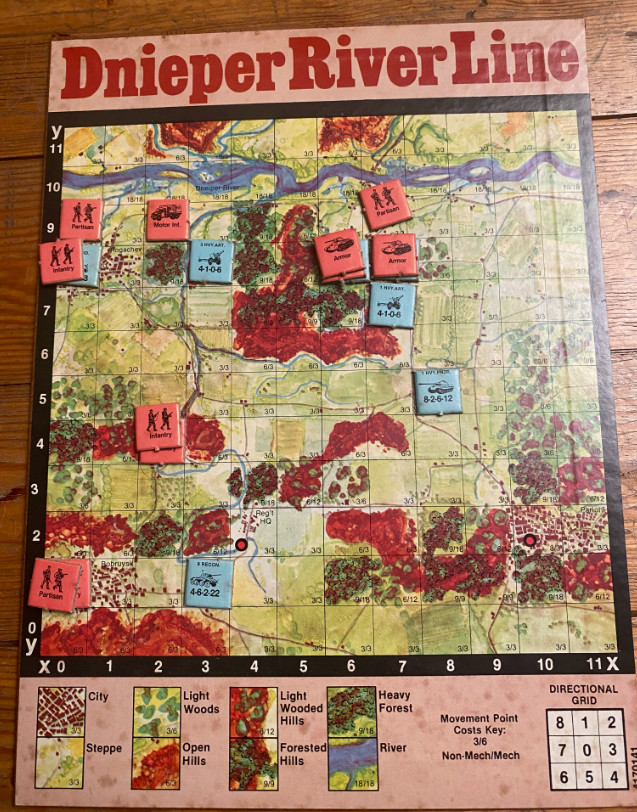
Once again, all their attacks are easily pushed back near the Dnieper. The only location requiring special interest is Bobruysk : the garrison is pleading for help. Unfortunately for the Russians, I have 3 artillery missions this turn, and consequently :
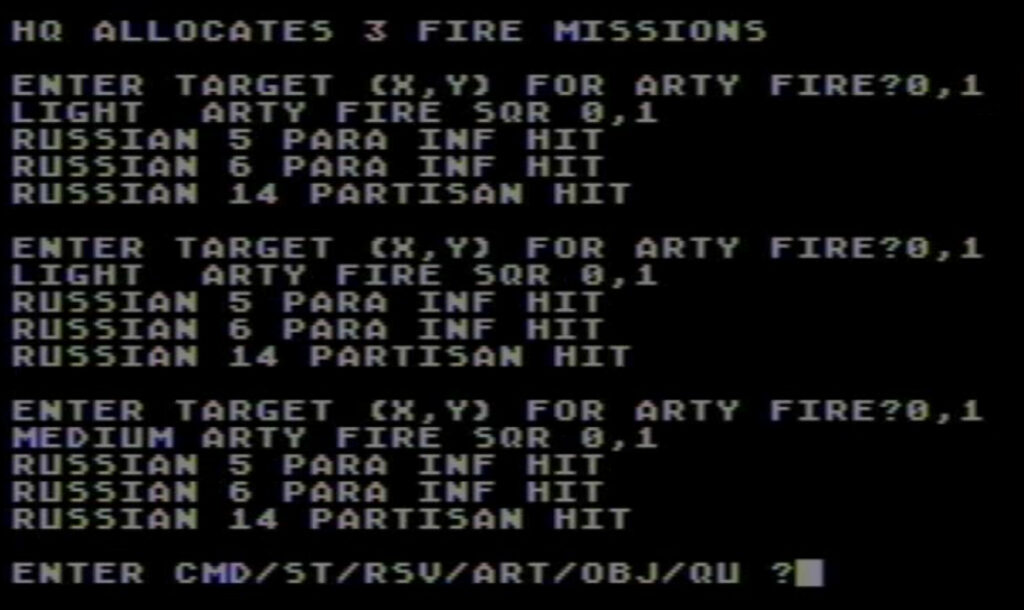
Three enemy units, but after being targeted three times this turn they probably each reached a “disruption level” of 3. Each level of disruption reduces the combat capacity (disruption 1 makes you fight at 1/2, disruption 2 at 1/3, and so disruption 3 at 1/4). Those 3 units each fight at 1/8 of their capacity. Time to move my recon, and finish the job !
After my recon has moved, and while waiting for combat resolution, I request the security unit. It is weak, but it can arrive in one turn. Once the Soviets in Bobruysk are routed I am confident it will be enough to defend the city. I also move my heavy tanks to support my assault guns as I am not quite sure why the enemy does not retreat.
Sadly, the Soviets ruin my plan – despite a very significant advantage, my reconnaissance unit is pushed back.
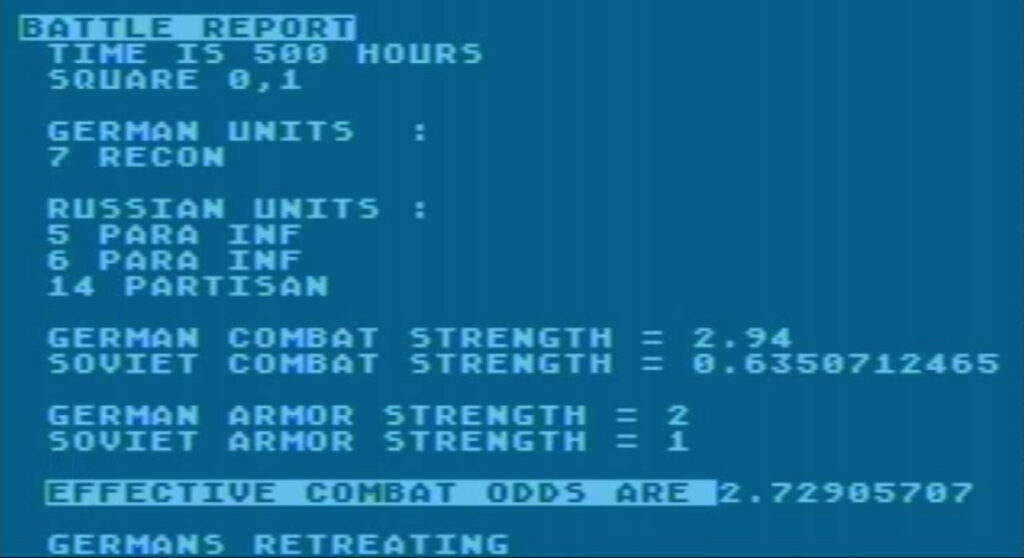
Worse, my heavy tanks supporting my assault gun are thwarted by a mere recon unit !
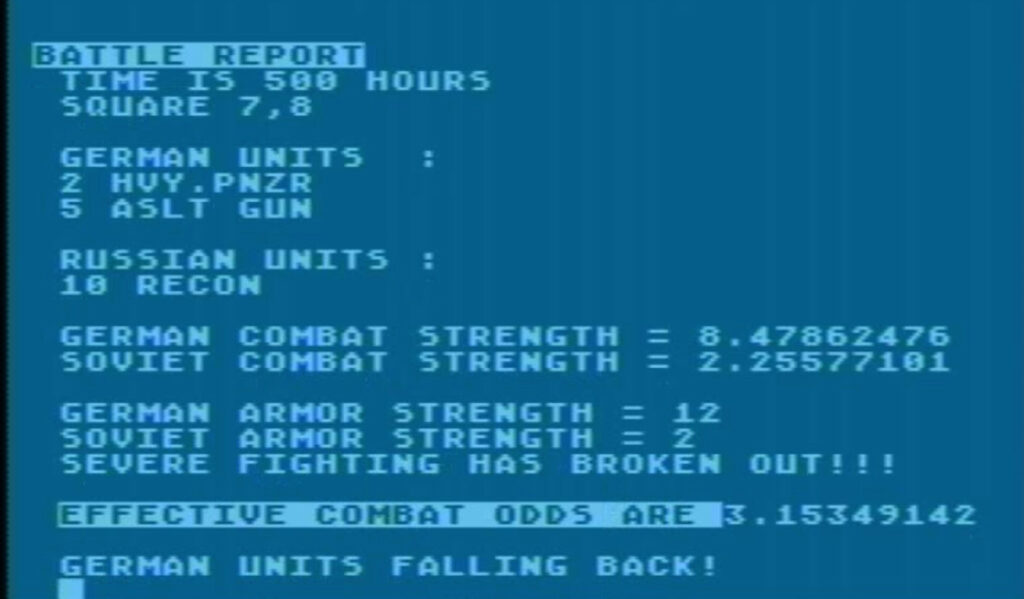
Worst, the heavy tanks decide they have had enough and break – they are lost forever – and Bobruysk falls to the Soviets ! Once an objective is lost, I cannot claim the victory points back by taking it again – just like my tanks, it is gone forever.

There is no way to sugarcoat this : I had an awful start.
C. Eye of the hurricane (turn 3 – 5)
The following Soviet turns are calm, with only dispirited and ineffective attacks on Rogachev. I receive reports that the Soviet average disruption is 0.88, so they are probably licking their wounds and concentrating their force. My constant artillery attacks on Bobruysk keep the paras and partisans there from moving, but some enemy units bypassed Rogachev and are slowly making their way toward another objective : the “regimental HQ”.
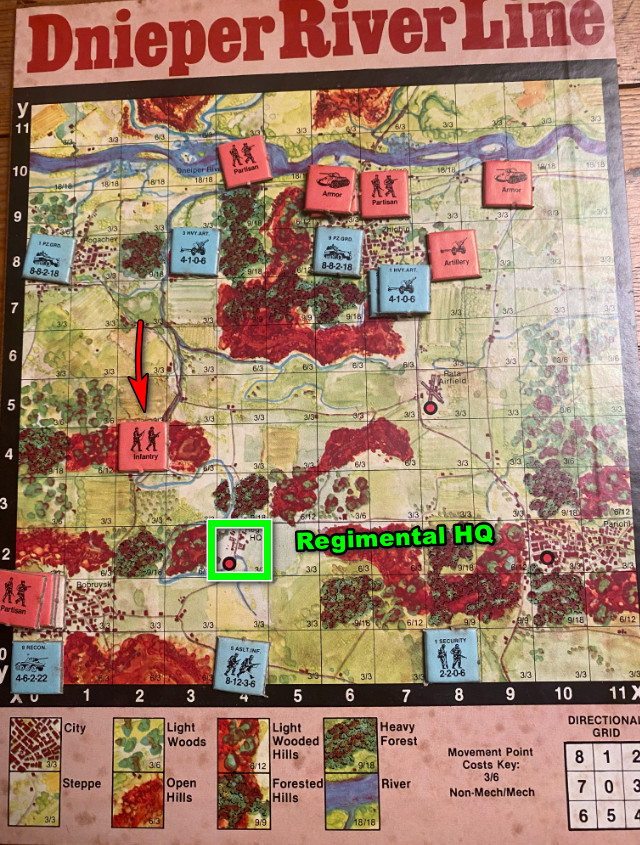
I use the lull to assess the general situation of my force :
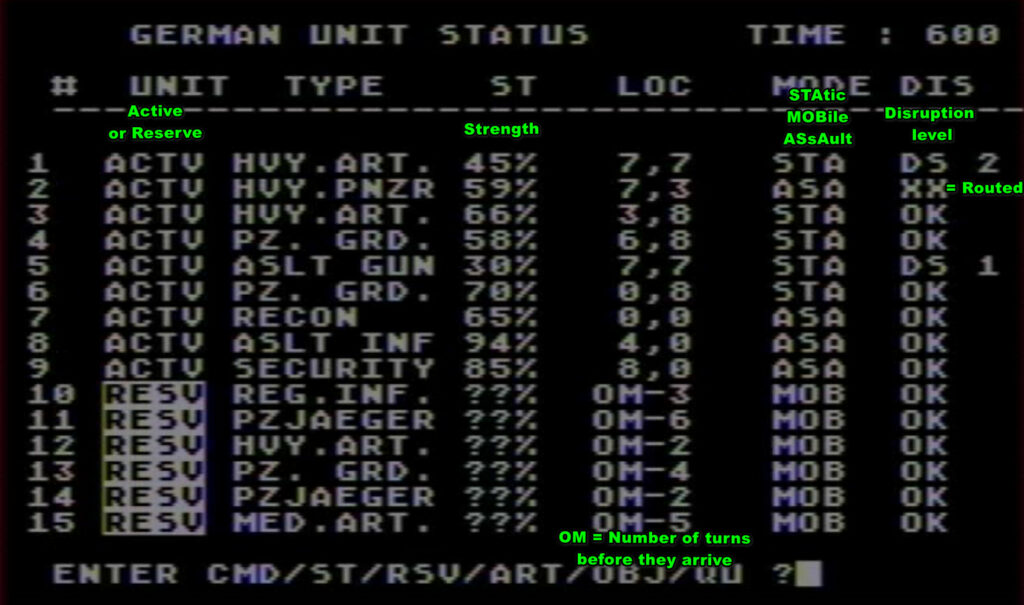
My assault gun has been badly mauled, and one of my artillery units has been attacked by enemy planes and heavily disrupted. Units can cancel up to one disruption level by turn, but strength losses are permanent, so that assault gun unit will not be useful for long ; I immediately bring it to Zhlobin as it is will be easier to protect with mines and panzergrenadiers.
At least I am now allowed to call almost all the reserves, though they will take some time to arrive.
My priority at this point is to reach the Regimental HQ before the Soviets. My assault infantry reaches it without issue. My recon receives some disruption, but it gets there eventually. A bit later, I also manage to sneak a panzerjaeger from the reserve. Just in case, I send my security unit to Parichi.
Meanwhile, my artillery supporting Zhlobin is harassed by enemy Sturmovik bombers, and just like the heavy tanks it breaks and routs. I have to approach the other artillery in support.
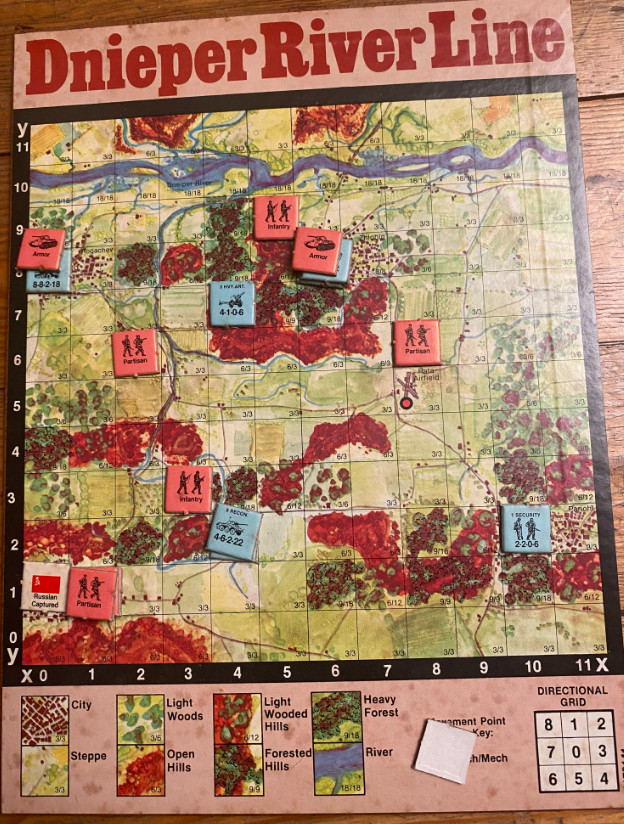
At this point, I am confident that the Rata airfield and Parichi are minor objectives. After routing my heavy tanks, the Soviets could have easily pushed their recon to the airfield but they did not, and similarly, I don’t see much movement toward Parichi.
D. The gift (turn 6)
It is now 9 in the morning, and I don’t see much because the Soviets are using smoke rounds :
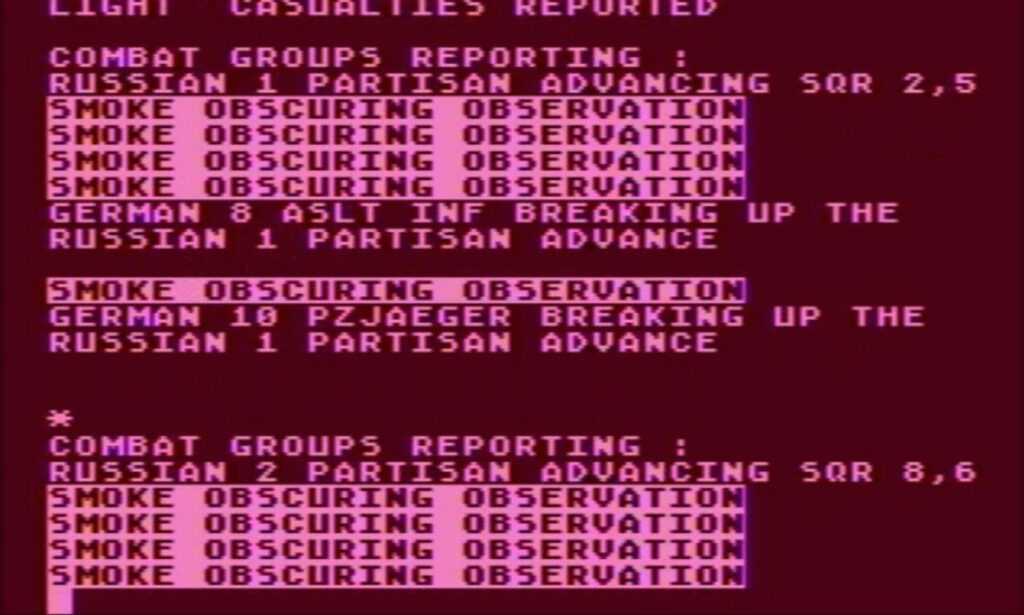
When the smoke clears, all the potential “major objectives” are under attack :
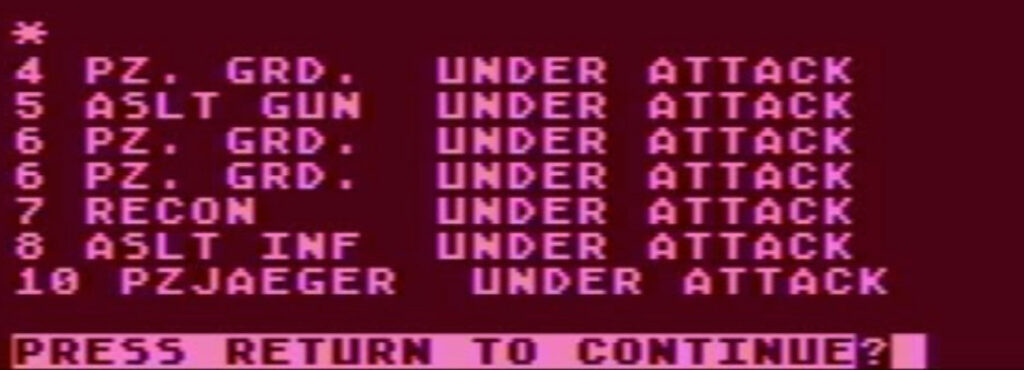
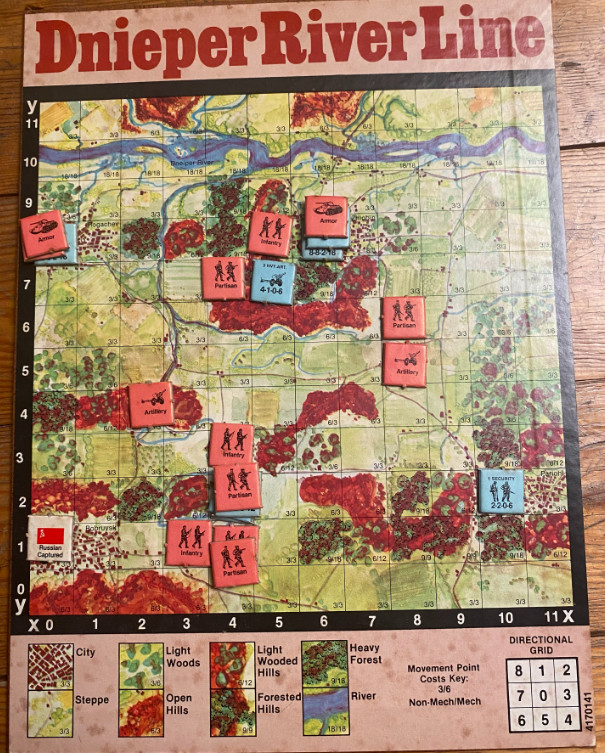
All the attacks are repelled, but I cannot challenge that artillery that is occupying my airfield. Well, minor objectives are worth at most 4 points, and this one more probably 0.
I am wrong :

Oh well.
E. Attempts at breakthrough (turn 7-8)
I am now doomed if I lose either the last major objective or the 4-points minor objective. From the pressure Zhlobin has received so far, I am pretty sure it is one of these. My immediate problem is that it is about to fall :
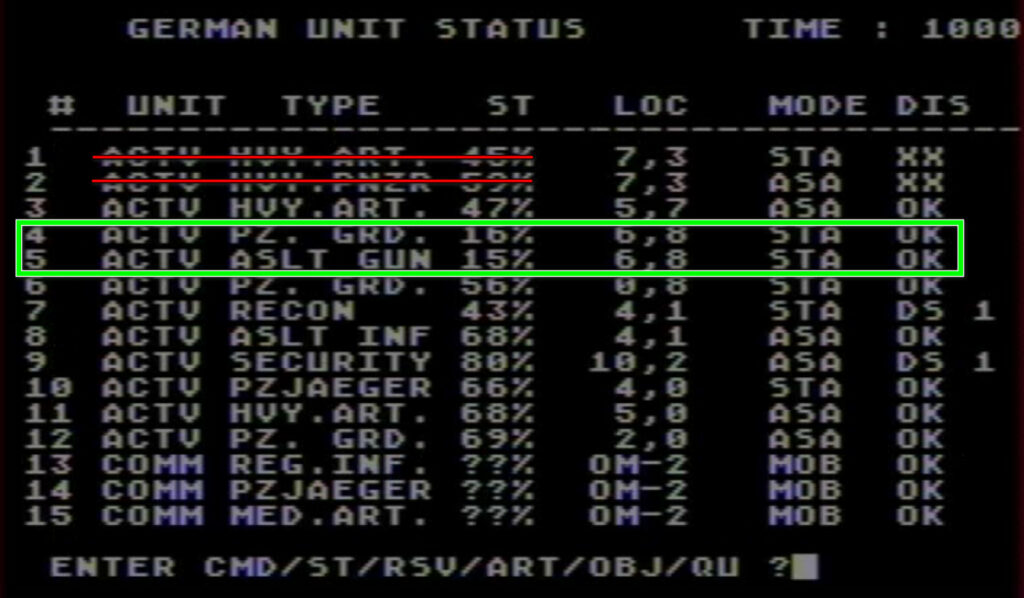
The defenders of Zhlobin are at 15% and 16% nominal strength. At this level, they can rout anytime, and if they get disrupted they won’t recover. I need to bring reinforcements now.
I move the artillery inside the city, and start transferringthe security unit, but that won’t be enough. What I need is reinforcements from the HQ, because I can play musical chairs and protect the HQ with the reinforcements from the reserve, including some new panzergrenadiers.
Sadly, the HQ is surrounded, and my sortie (with recon and assault infantry) is intercepted by an elite NKVD regiment, while my reinforcements to the HQ are intercepted by partisans. My recon is pushed back, but my reinforcements prevail but are stopped for one turn !
Meanwhile, the Russians try some more attacks on Zhlobin, which I overcome once again :
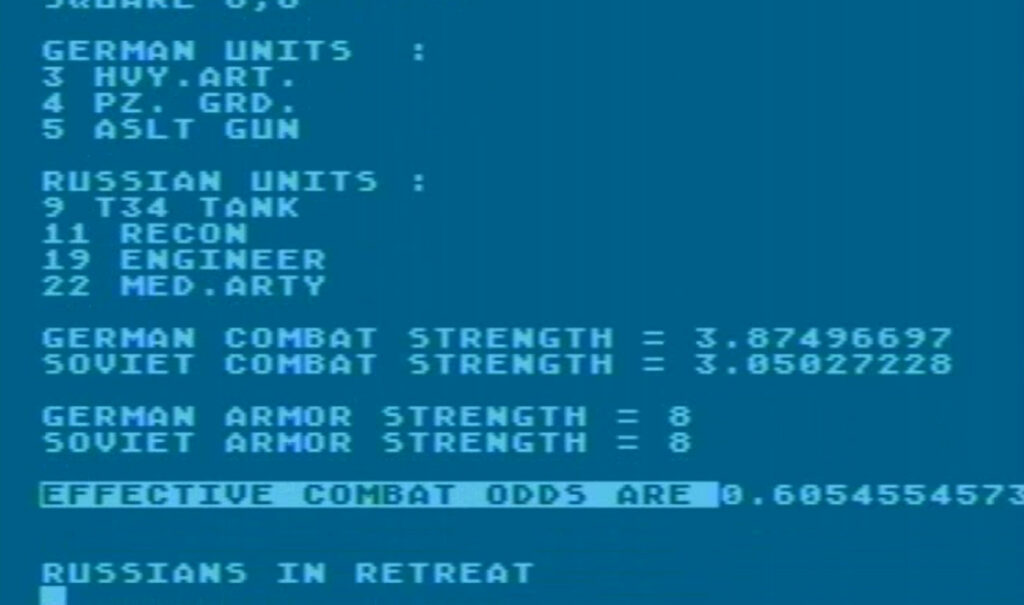
The Soviets seem exhausted:

They temporize the following turn, but another of my attempts to break through is pushed back. At 11 AM, this is the situation :
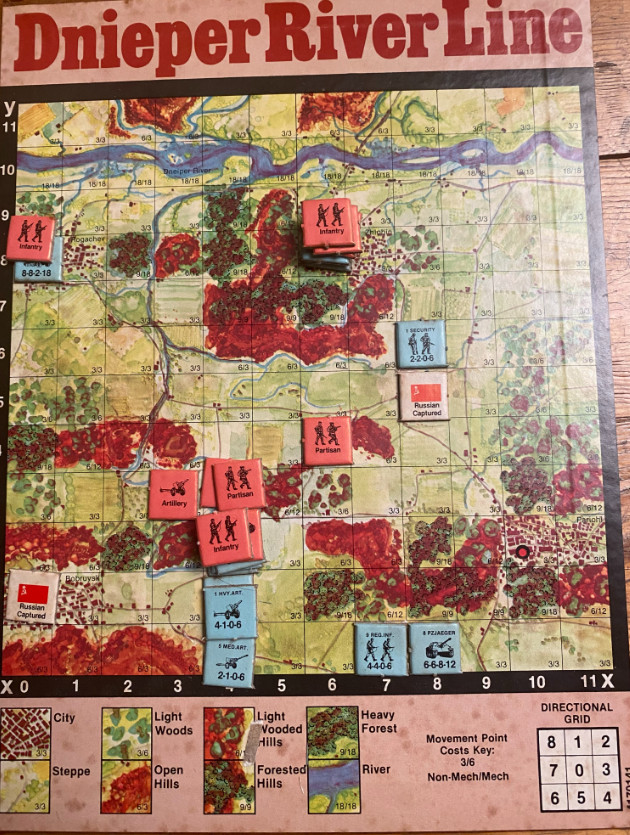
F. The end (turn 9)
I won’t break through on the left, but my security force moved without opposition on the right through the airfield. I just received a new panzerjaeger. Maybe I have a chance : my security unit will reach Zhlobin this turn, and the panzerjaeger is fast enough to reach it in two turns – if it has no operational issues. That’s my new plan ! Great plan ? No. Only plan ? Yes.
I put it into action, and then… the Soviets don’t get to play their turn :
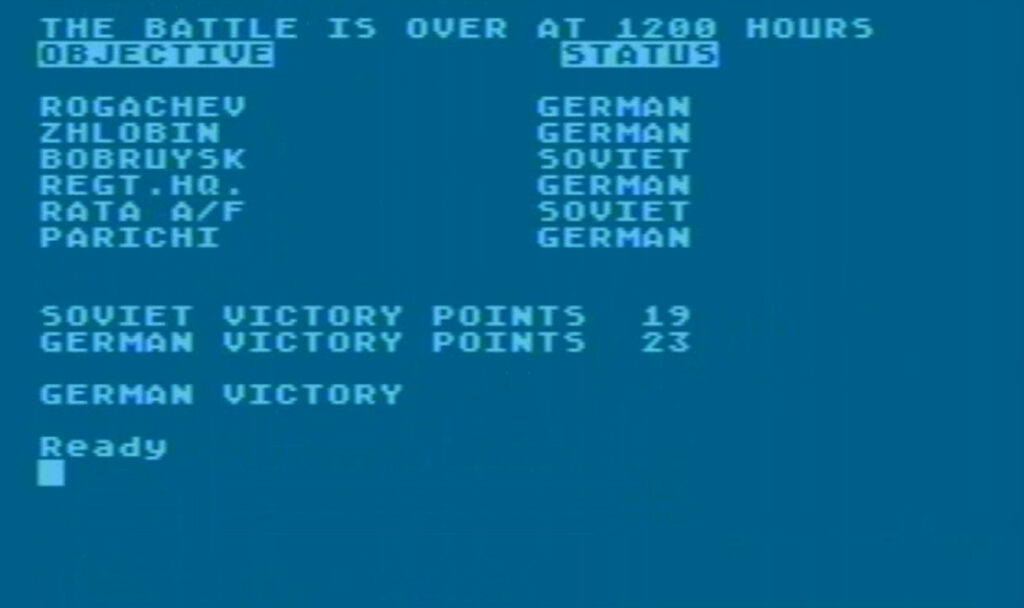
… I won ! The random number generator, so punishing at the beginning of the battle, ended the game after only 8 turns. My last desperate strategy will not be put to test after all.
Frustratingly, the game has no final report on what were the objectives and what is the status of the Soviet Force. Without any other intel on the subject, I like to think there were only 5 Soviet soldiers left, clutching the pictures of their loved ones.
Review and Rating
Dnieper River Line by Bruce Ketchlege and published by Avalon Hill, USA
First release : Commodore PET/Atari 800/Apple II/TRS-80 in January 1982
Tested on : Apple II and Atari emulator
Total Hours Tested : 6 hours
Average duration of a battle : 90-120 minutes. The game can end earlier on a defeat.
Complexity : Easy (1/5)
Would recommend to a modern player : No
Would recommend to a designer : No
Final Rating: Totally obsolete
A. Immersion
Dnieper River Line was the frontrunner of Avalon Hill’s renewed attempt to penetrate the computer market in January 1982. The problem of course is that Avalon Hill hadn’t yet really figured out what made a computer game good, and as such they spent a lot of time and effort on the “non-computer” parts : the board and the counters.
Indeed, the quality of the counters is miles above the ones in Tanktics (except for the fact that they’re both equally difficult to punch). But what’s on the counters themselves is poorly thought out. For instance, they are 16 counters for each of your unit types, but there are only 5 types of enemy counters (partisan, infantry, motorized infantry, artillery and armor). Even if you identify properly some SU-85 units, or some reconnaissance, you have to use the “armor” counters. Frustrating. Worse, there is no counter for “unidentified enemy force”, so you have to use the “empty” counters, and they don’t look good. Similarly, the game provides you with some counters for your minefields, but none for your garrisons. On the other hand, it provides you with useless “German Occupied” counters. All in all, using counters was not half as fun as I expected.
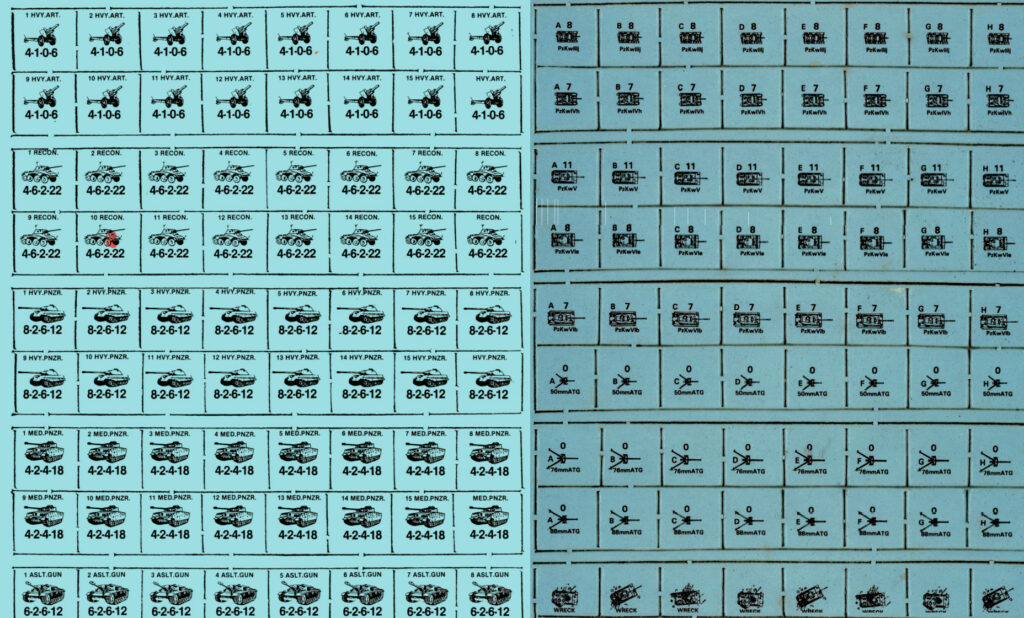
Boards and counters are not where video games are expected to shine, and on the computer program front Dnieper River Line fails. No graphics would have been acceptable in 1980, but in 1982 it exposes the game to very quick obsolescence – Eastern Front 1941 had been released 6 months earlier already.
Avalon Hill understood this and the later Commodore 64 version included very limited graphics ; I have not played this version but I doubt anyone was truly satisfied :
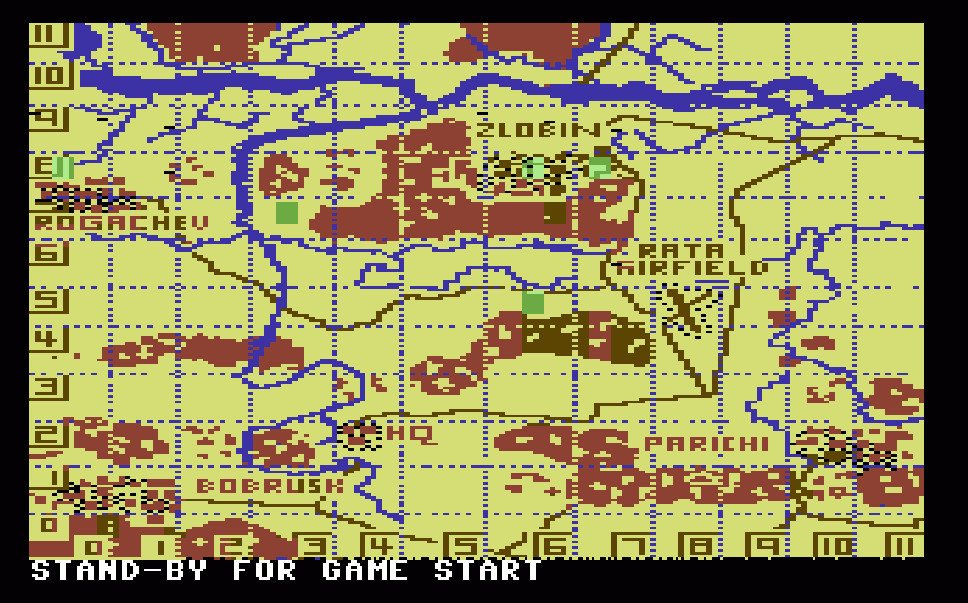
As for the general atmosphere of the game, it starts strongly but the weakness of the ruleset, of the UI and of the AI quickly ruins it.
Rating : Very bad
B. UI, Clarity of rules and outcomes.
On UI, Dnieper River Lines is the worst of any Avalon Hill game I have played so far – not a small feat. You need to keep your eyes glued to your screen to understand what’s happening, as the text scrolls sometimes too fast to follow, and sometimes agonizingly slowly. At the end of the enemy turn, there is no final recap of where the detected enemies are, and yet, just like in Napoleon’s Campaigns, your troops will tell you that “Russians are seen nearby“. Where ? Your troops won’t tell.
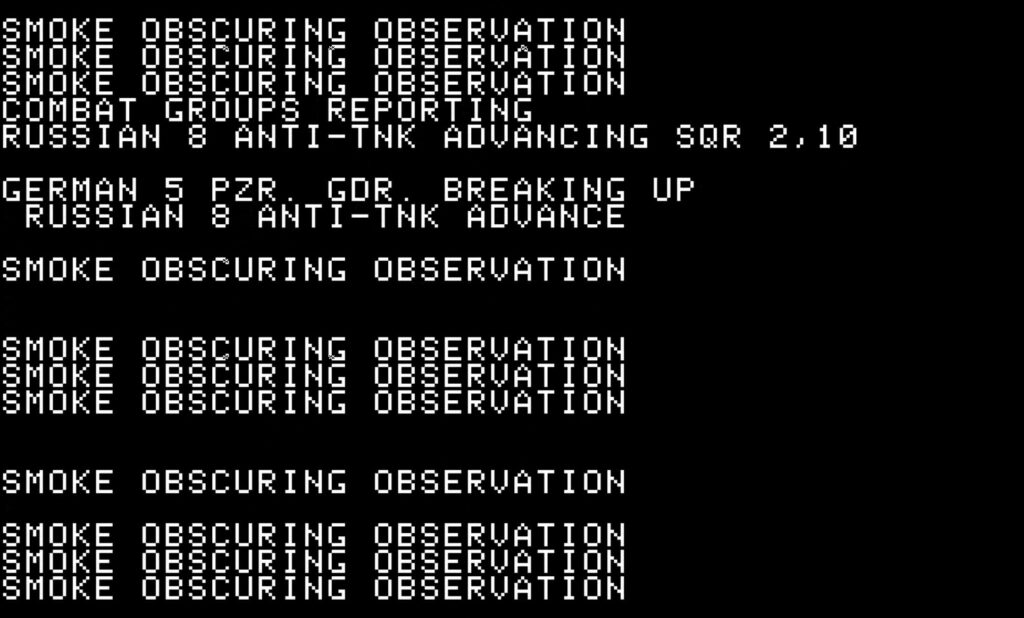
The manual has some glaring mistakes. It states for instance that only some specific units “may fire on enemy mechanized units during enemy movement phase”, but in my experience, all units can fire at all types of enemy units during the movement phase. The manual mentions a range of 5 for artillery support but either terrain has an impact specified nowhere in the manual, or the maximum range is much smaller. When it is not mistakes, it is omissions : the manual mentions that units that “retreat” move back by two tiles, but it does not mention that there are also “withdrawals”, when units move back by one tile. In general, the rules you care about (combat in particular) are not explained in any satisfying way. I don’t expect full details, but does terrain even play a role ? I have no idea.

Finally, there are some bugs (at least on Atari, on Apple II either they don’t exist or I was lucky), like the enemy not retreating even when defeated.
Rating : Terrible
C. Systems
I wish I could give you more details about the game rules, but as I said, they are not explained, so a few highlights not already covered in the AAR :
- As you move, units (whether yours or not) are exposed to be shot and disrupted. I believe you can only be disrupted when next to an enemy, but I sometimes stopped (and disrupted ?) Soviet units from several tiles anyway, so it feels very random, and very punitive when you receive three levels of disruption at the same time,
- While your units can be routed, Russian units will never ever rout. It certainly represents how tenacious they were, but in gameplay terms it means you need to read everything about the movement of the 8 soldiers sharing 3 rifles left in some Soviet units every turn. These depleted units will stop you when you move on their tiles, and possibly they can even stop and disrupt your units as they move,
- Your units have 3 modes : MOVement (twice the speed, half the attack), STAtic (no movement, better defence in some way, and the only mode that allows artillery to support other units) and ASsault, actually the default mode. Transitioning from one mode to another can fail, adding yet more randomness to the game,
- There are some anti-armor stats that, err, help you fight armors, I think ? Maybe ?
The game is supposed to be about defence but also movement and counter-attacks. In practice, any movement is frustratingly difficult :
- First, there is chance that your unit has some operational issue. Whoops, no movement for you,
- Then you can encounter the enemy at any time, which also stops you, whatever their strength, even those 8 dudes with their 3 rifles,
- Of course, when you move, there is always the chance that you “come under fire”, which quickly stops you, with disruption,
Even if you are lucky enough to be able to move, there is the second problem : attacking is punishingly hard. To make sure you don’t collapse at the first Soviet attacks, the game favours defence to the extreme so your attacks will consistently fail even at “effective odds” above 3.
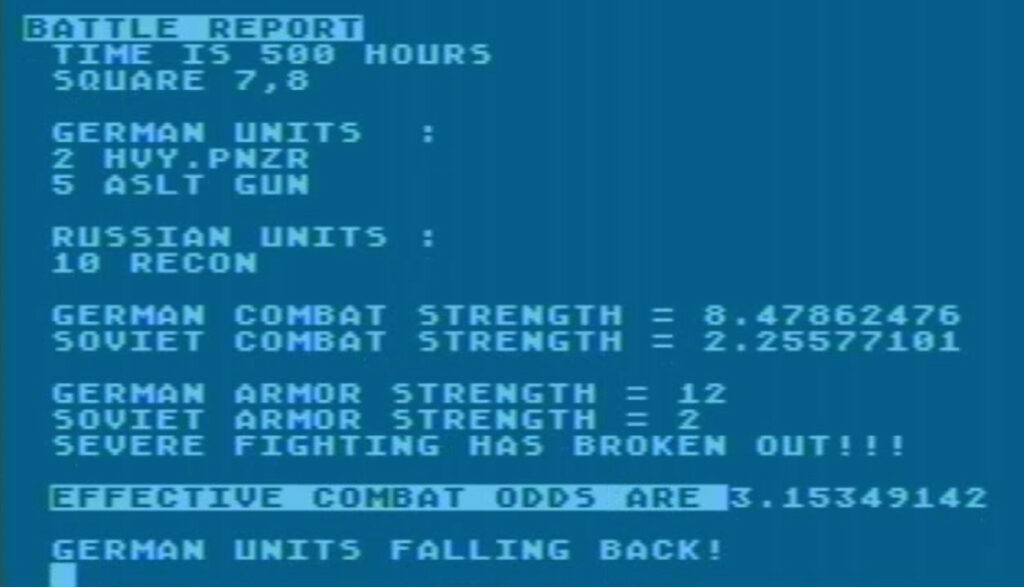
Bottom-line : You will rarely move your troops and only to bolster your defence, never to attack. This makes the time playing much shorter than the time spent waiting in front of your screen.
Rating : Very bad
D. Scenario design & Balancing
The game has 4 levels of difficulty and two types of scenarios :
- “Meeting engagement” represents the kind of engagement that happened at the beginning of the battle of the Dnieper : unprepared Soviets trying to cross with unprepared Germans trying to stop them. In this scenario, artillery and air support is limited on the Soviet side, but the Germans don’t have many garrison units or mines. German reinforcements will also take longer to arrive, but the Soviet side seems to arrive more slowly.
- “Strategic offensive” is what I played : the big deal with a lot of everything, very early.
The game has a lot of randomisation, and with the high number of unit types each battle could be quite different. Sadly, the game is just not interesting enough to want to try more than a few battles.
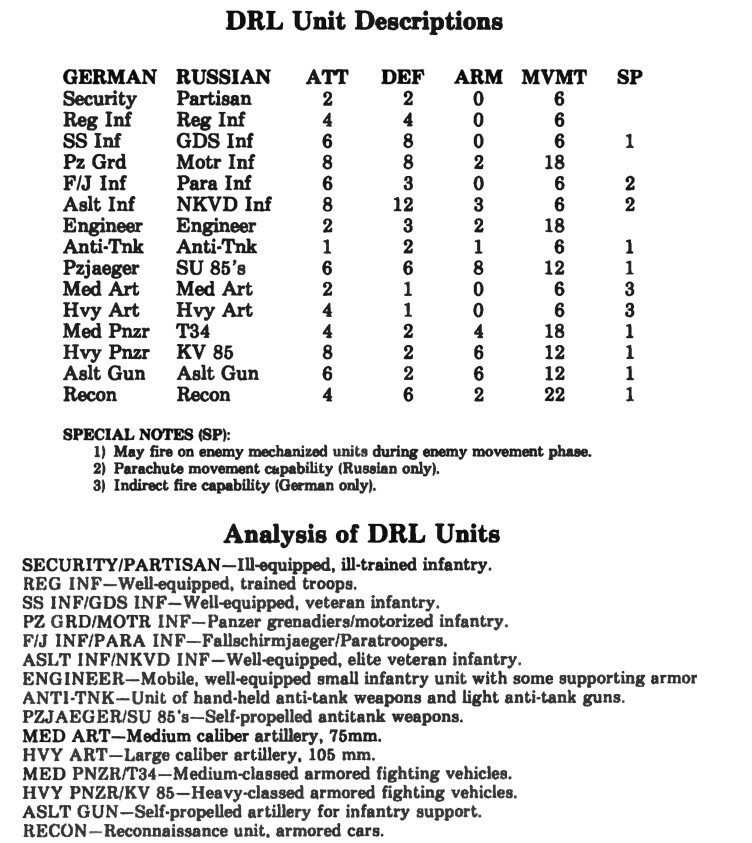
The AI is not very subtle. It seems to pick a target for each of its units, and then stick to it again and again. It means it sometimes totally ignores a target, even undefended, because no unit has been allocated to it. Sometimes though, more than half the enemy units attack the same target, in which case it is very easy to point your off-map artillery, for devastating damage :
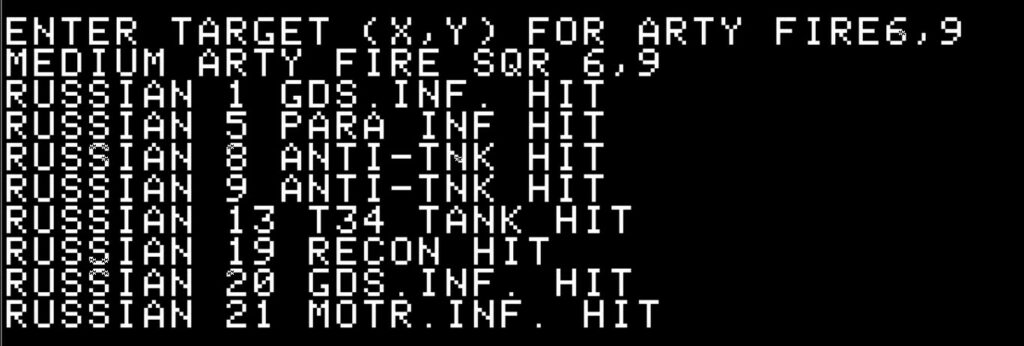
The game does not feel balanced, it just feels random. You win because the enemy objectives were those cities you decided to defend, or you lose because this time the AI had a lucky draw in terms of initial unit allocation, while you tried to make the best out of some regular infantry and medium artillery.
Rating : Very bad
E. Did I make interesting decisions ?
Rarely. Deployment may seem like an important decision, but since you don’t know what the enemy needs to capture, your initial deployment is likely to be always more or less the same : defend near the Dnieper and keep your mobile units in the back. After that there are some decisions to make here and there, but for a game that lasts 2 hours I could count them on my hands, and most of them were ruined by some random number generator anyway.
F. Final rating
Totally obsolete. Sadly, it was one of the games I had the most expectations for.
Contemporary review :
Dnieper River Line was a major release in early 1982, with reviews in all the magazines that mattered. Richard Charles Karr pens the first review for Computer Gaming World (July 1982). Karr states that his only “possible criticism” on the game is about victory conditions, yet the review is more descriptive than enthusiastic and ends with this mellow conclusion : “[…] a well-developed game which computer wargamers should check out.” Karr also found the game fairly winnable, an assessment not shared by the reviewer of Softalk (November 1982) who found it difficult for the Germans “even to obtain a draw”. Softtalk‘s review is otherwise mostly descriptive, though it notes that if Avalon Hill added “complex color graphics” to their games, they could become a force to be reckoned with on the market.
The only staunch and unambiguous supports for the game comes from Softline (March 1983), where Michael Klem proclaims the game excellent and requiring skills : “one of the better war simulations available today”, and from the Australian Your Computer which states in December 1982 that the game has good value for 40 dollars due to its depth and variety of play. It also praises the fog of war, which would not have been possible on a non-computer wargame.
On the other hand, Daniel Campagna for Creative Computing reviews the Commodore 64 version in September 1984 and finds many shortcomings with the game, in particular the fact that it reduces the German role to that of a passive defender, as counter-attacks rarely succeed. Dnieper River Line is also “more sedate than necessary” : “Wargamers yearn for the unpredictability of simulated combat as a way of testing their judgment under pressure against the impartial logic of the computer. DRL is too abstract to produce this effect.” He politely concludes by stating the game is very good, though not excellent, but that’s really not the tone of the review.
In France, the game gathered some reviews and unlike the Americans, the French were not afraid of bruising some egos. Casus Belli (December 1982) allocates one of its rare video game reviews to Dnieper River Line, calling it “a mediocre game” in which the computer almost always uses the same attack pattern, and concludes by saying that the only advantage of the game is that it is the first [traditional] “wargame available on PC” – clearly Avalon Hill’s distribution network in Europe was better than SSI’s. Later, in March 1984, Tilt murders the game in its article on existing wargames (realism : 1 star out of 6 ; interest : 2 stars out of 6). Even I find this realism score a bit mean : the sci-fi game the Cosmic Balance got 3 stars !
Computer Gaming World finally follows the French lead in its 1991 review of all WW2 wargames : “[Dnieper River Line] is not so much a computer game as it is a computer assist to a boardgame […]. It ultimately succeeded on neither level.“
21/11/2021 Addendum below :
Dniepr River Line and Dneiper River Line
As I was looking for reviews of Pursuit of the Graf Spee, I stumbled upon a review of Dnieper River Line that I had missed… because the game was called Dneiper River Line by the reviewer. I added the review above.
As I was curious, I tested “Dneiper River Line” in the Internet Archives search engine, and oh boy ! as a name it is barely less popular than Dnieper River Line ; even Avalon Hill sometimes called the game “Dneiper River Line” in its catalogue or… in the legalese at the bottom of my own game box !
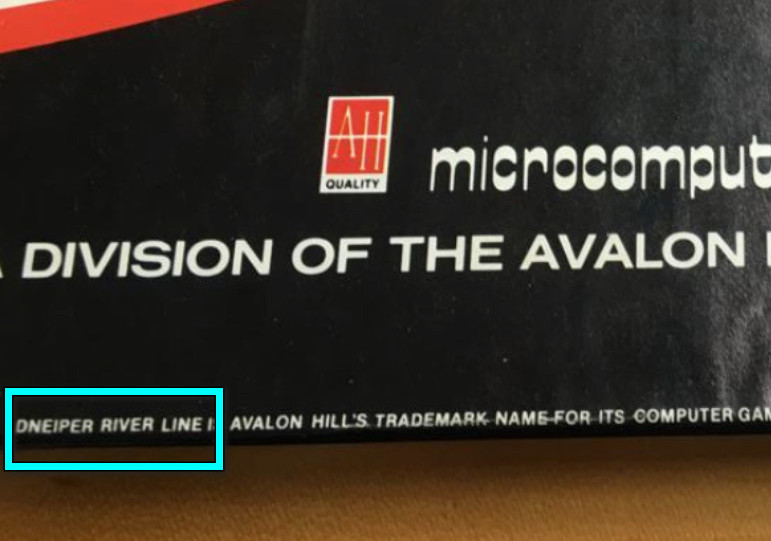
I also had a handful of hits for “Dniepr River Line” (including the French Tilt… Dniepr is indeed how the river is spelt in French) and even one glorious “Dneipr River Line” in a British publication.
I can’t wait for a wargame happening in other regions with disputed transliteration, for instance covering the Lvov–Sandomierz offensive !
7 Comments
Simulation aspect. The real-life commanders didn’t have a choice when they were assigned a rag-tag group of depleted troops. Sobering.
Love that paper map. Hand-painted. Beautiful.
Wow, a complete game, unpunched. How much did that set you back? You’re supposed to use an X-acto knife to cut counters off their sprues.
You didn’t show the reinforcement screen. “General Manstein is on the line!” it says, in what I thought was a neat bit of chrome.
Heavy panzer routed by a recon unit. A storytelling gamer could spin quite a yarn about that one. That’s what I love about wargames with randomness, how anything can happen and how it gets woven into the tapestry of the game. Unfortunately there are a lot of people who play games to feel a sense of control and they’d be outraged by a stupid result like that.
This is a really cool concept: a board wargame with a computer to play the other side. Moreover, it’s attacking! Usually wargame designers lame out and make the computer the defender, where it mostly doesn’t move its pieces from its initial placement, or if it does it stupidly moves away from a good position. Nice it being the other way around for once.
A forgotten part of the Eastern Front, a grab bag of random troops, enemy numbers unknown but surging, enemy paradrops, desperate attempts to stem the tide, a random turn ending, and snatching victory from the jaws of defeat. It’s like Combat Commander.
“[Dnieper River Line] is not so much a computer game as it is a computer assist to a boardgame […]. It ultimately succeeded on neither level.“
Yeah ultimately a dead end. Still, a fascinating time when nobody knew what a computer game was supposed to be, so people would just create anything.
Thanks, excellent additions.
– I actually liked the fact that you don’t choose what you have to fight with. Even the accumulation of “randomness” is fine with me ; I dislike the combination of high randomness and lack of agency, which means that whatever hand you are given at the beginning predetermine how it will all end. High randomness but high agency make the best games in my opinion ; the recent Into The Breach comes to mind.
The theme is interesting, being in defence trying to plug the holes as much as you can is unusual ; and those were the reasons I was really looking forward this game. It did not deliver.
– I got this game (and an unpunched Tanktics) for almost nothing – the most expensive part was the shipping (40 USD from Venezuela to France). Tanktics box got damaged on the way, but the counters were intact and unpunched as well. I did not know you have to use some sort of knife, I am used to counters extremely easy to punch by hands.
– I initially had the “Manstein” screenshot (with a joke on how the Soviets crossing would not help his career), but it did not pass the final cut. I am now trying to have shorter, more “punchy” AAR, and only a few lines on reinforcements was enough.
– I can imagine a Heavy Panzer “routed” by some recon, for instance the Heavy Panzer expects the recon to be only a part of the larger force, or the lead Tiger just breaks because that’s what Tigers did, and the rest retreats. In this case it was particularly frustrating because the recon was there due to a bug (it should have retreated) AND it pushed back my assault gun that should have been in defense…
–
I didn’t expect my country to hold a copy of this game either. Out of curiosity, from which part of Venezuela you got the game?
Sadly I purchased it from ebay so I really don’t know – I only have the country. The box confirmed it was from Venezuela, that’s all I remember.
You mentionned the text scrolling too fast on another game. I wonder how much of that is actually due to your playing on an emulator.
Also, how could they have misspelled Dneipre Rievr Lien so many times?!
Honestly I would not know. I am running the emulator at “historical speed”, but Altirra has only one common setting for Atari 400 and Atari 800, and possibly it is running at Atari 800 historical speed which is still too fast.
For Starbase Hyperion, I was running at 25% historical speed and it was still too fast, so I honestly dont know.
A fantastic read. An interesting hybrid game. The physical map is a lot prettier than the computer map!